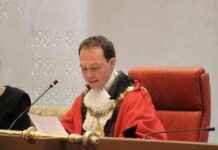Sadiq Khan’s decision to push forward with the pedestrianisation of Oxford Street has sparked some conflicts and tensions among local governance. Despite the street’s significant annual sales and visitor numbers, it has struggled to compete with other shopping destinations in London. Mayor Khan believes that reducing traffic on the street will help revitalize it as a top retail and entertainment spot, especially with the opening of the Elizabeth line bringing in more visitors.
However, Westminster Council, now under a Labour administration, is reportedly unhappy with the Mayor’s plan. The council had its own program to enhance Oxford Street, and now the Mayor’s proposal to create a Mayoral Development Corporation (MDC) accountable to him is seen as potentially undermining Westminster’s efforts.
There are concerns from residents living near Oxford Street about increased traffic on residential streets, noise, and antisocial behavior. It will be crucial to manage these issues effectively to prevent negative impacts on the local community. Proper coordination between various stakeholders, including City Hall, affected boroughs, Transport for London, and the Metropolitan Police, will be essential to ensure the success of the pedestrianisation plan.
Mayor Khan’s approach to using an MDC for the transformation of Oxford Street indicates a broader vision for the area beyond just traffic management. By leveraging the potential of the Elizabeth line and driving economic growth in the West End, the initiative aims to benefit the entire central London economy.
The challenges posed by conflicting views and interests among different governance bodies highlight the need for a comprehensive strategy to balance economic development with the well-being of local residents. The establishment of mechanisms to allocate a portion of economic gains to community improvements could be a significant step forward in addressing these concerns.
The current funding structure, with limited incentives for boroughs to grow their tax bases, has hindered local authorities’ ability to invest in public services. Shifting towards a model where increased business taxes directly fund public services could facilitate ambitious urban improvement projects like the Oxford Street pedestrianisation.
As the debate over the future of Oxford Street continues, it is essential to find common ground among stakeholders to ensure the long-term success of the initiative. By addressing governance conflicts, engaging with local communities, and prioritizing sustainable development, Oxford Street has the potential to become a thriving and vibrant hub in London’s West End.












